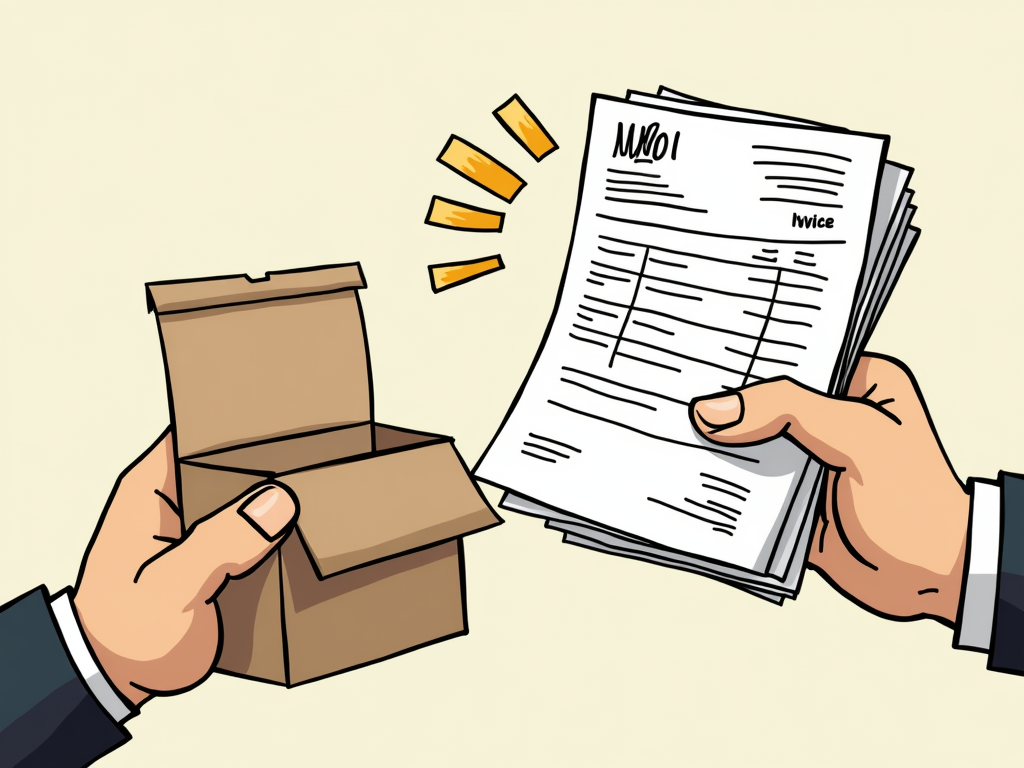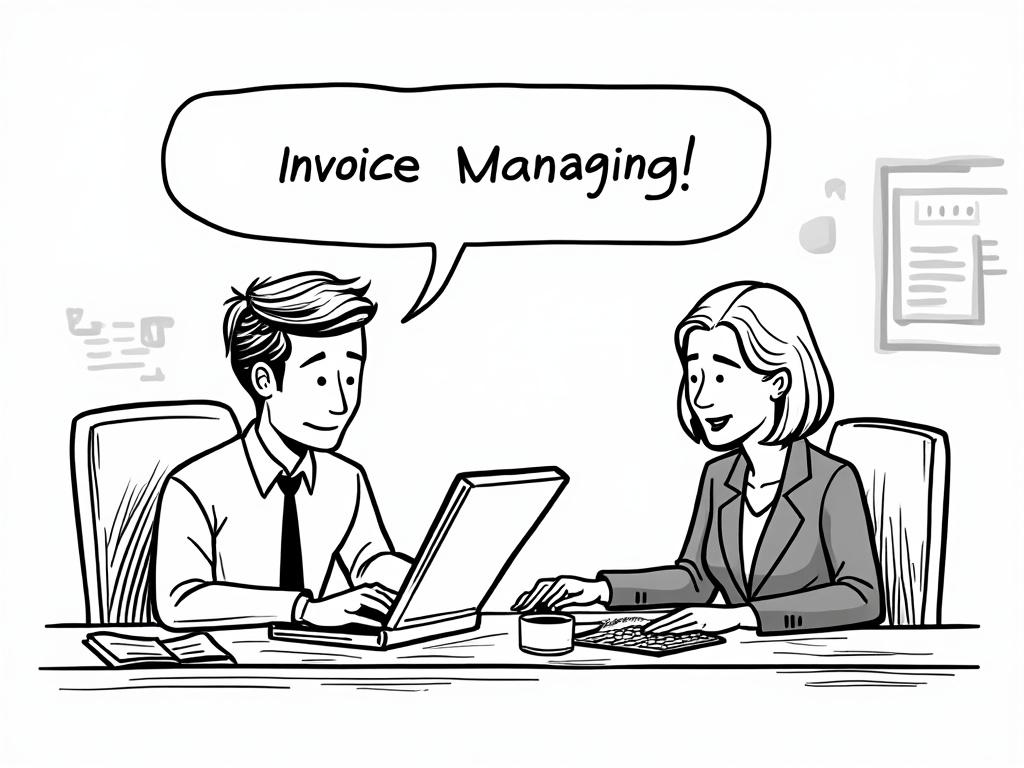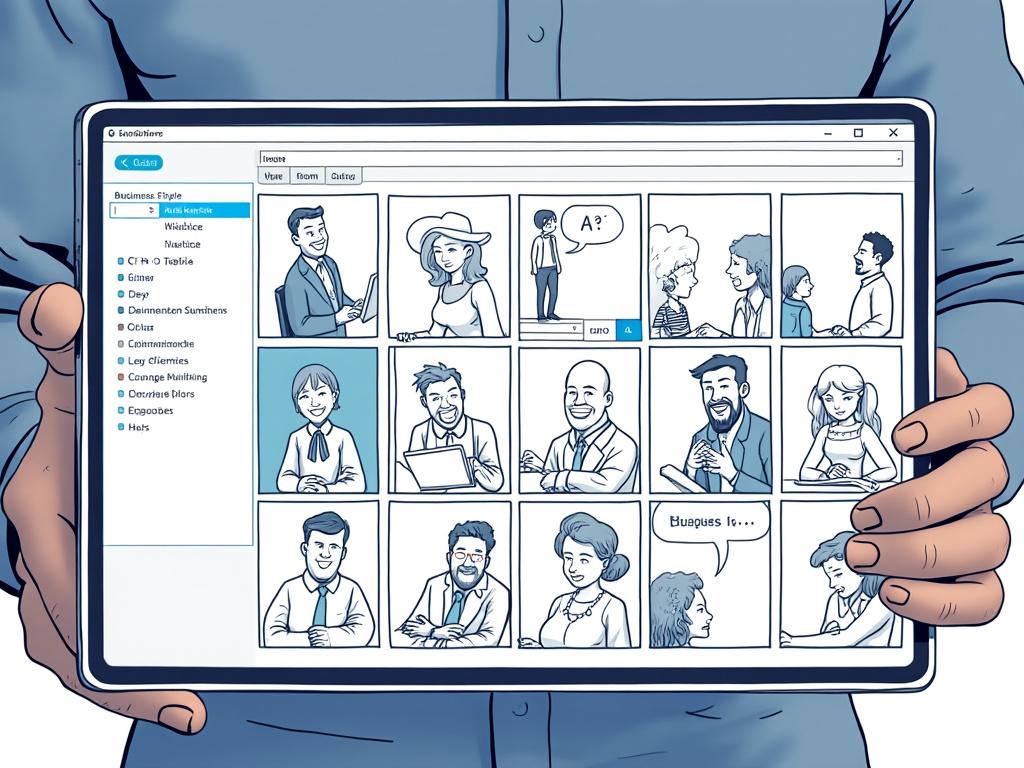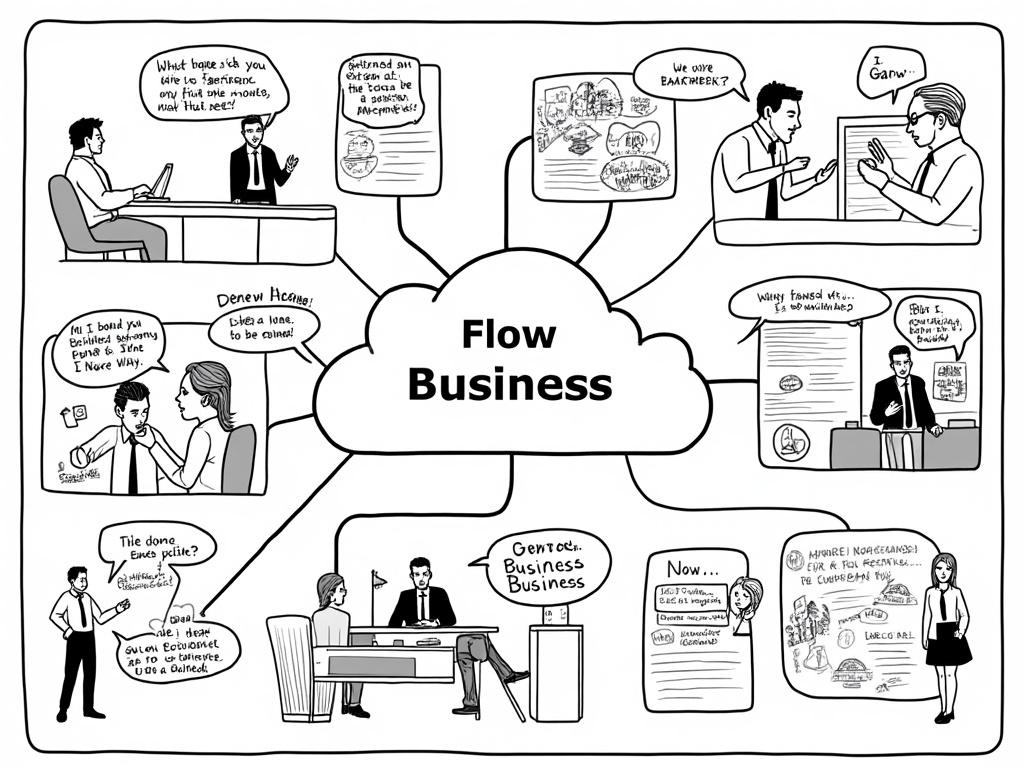
Electronic Invoicing in Spain: Navigating the Digital Transformation of Business Documentation
Reading time: 14 minutes
Table of Contents
- Introduction to Spanish Electronic Invoicing
- Legal Framework and Compliance Requirements
- Technical Specifications for Spanish E-Invoicing
- Implementing E-Invoicing in Your Business
- Digital Record-Keeping Requirements
- Benefits and Challenges of E-Invoicing
- Future Trends and Developments
- Conclusion
- Frequently Asked Questions
Introduction to Spanish Electronic Invoicing
Spain stands at the forefront of Europe’s digital transformation in business documentation. If you’re operating in the Spanish market—or planning to—you’ve likely encountered the term “factura electrónica.” Let’s be clear: this isn’t just about sending PDF invoices via email. Spain’s electronic invoicing ecosystem represents a comprehensive digital reformation with specific technical standards, legal requirements, and strategic implementation challenges.
The landscape shifted dramatically in 2015 when Spain mandated e-invoicing for all suppliers to public administrations. Now, with the upcoming “Crea y Crece” law set to take full effect in 2024-2025, we’re witnessing the next evolution—mandatory B2B electronic invoicing for all businesses operating in Spain, regardless of size or sector.
Consider this: In 2022, Spain processed over 206 million electronic invoices through its FACe platform alone, representing a 15% increase from the previous year. This isn’t merely a regulatory shift; it’s a fundamental reimagining of business documentation processes.
“Electronic invoicing in Spain isn’t simply a technological adaptation—it’s a strategic imperative with significant implications for tax compliance, business efficiency, and fraud prevention,” notes María González, Tax Director at Deloitte Spain.
Let’s navigate this complex landscape together, transforming potential compliance headaches into strategic advantages for your business operations in Spain.
Legal Framework and Compliance Requirements
Understanding the legal evolution of electronic invoicing in Spain provides crucial context for current compliance requirements. The regulatory framework has developed in distinct phases, each expanding the scope and technical requirements of digital documentation.
Evolution of Spanish E-Invoicing Legislation
Spain’s journey toward comprehensive electronic invoicing began well before many European counterparts, establishing the country as a digital pioneer in this domain:
- Law 56/2007 – First established the legal framework for electronic invoicing
- Royal Decree 1619/2012 – Aligned Spanish invoicing regulations with European Directive 2010/45/EU
- Law 25/2013 – Mandated e-invoicing for all suppliers to public administrations
- Royal Decree 1512/2018 – Enhanced technical specifications and verification procedures
- Law 18/2022 “Crea y Crece” – Expanded mandatory e-invoicing to all B2B transactions
The “Crea y Crece” law represents the most significant expansion to date, with implementation rolling out in phases through 2024-2025. Rather than viewing this as merely another compliance burden, savvy businesses recognize this as an opportunity to modernize their financial operations while gaining enhanced visibility into transaction flows.
Current Compliance Requirements
Let’s break down the essential compliance elements that every business must address:
- Format Requirements: Invoices must comply with the Facturae format (XML structured standard) when dealing with public administrations, though other formats like UBL 2.1 are permitted for B2B transactions provided they meet content requirements.
- Digital Signature: A qualified electronic signature is mandatory, ensuring authenticity and integrity.
- Preservation: All electronic invoices must be preserved for at least 4 years (general rule) using systems that guarantee readability, authenticity, and chronological order.
- Immediate Information Supply (SII): Large businesses must submit invoice data to tax authorities within 4 days of issuance or receipt.
- QR Codes: Since July 2020, simplified invoices (under €3,000) must include a QR code with specific transaction data.
A practical challenge many businesses face is distinguishing between mere digitization (sending PDF invoices via email) and true electronic invoicing that meets legal standards. The distinction isn’t semantic—it’s fundamental to compliance.
Real-world scenario: A mid-sized German manufacturer expanding into Spain continued sending PDF invoices to Spanish clients, unaware that these didn’t constitute compliant electronic invoices under Spanish law. During a tax audit, they faced penalties exceeding €30,000 for non-compliance, despite having meticulously maintained all invoice records.
Technical Specifications for Spanish E-Invoicing
The technical architecture of Spanish electronic invoicing goes far beyond simple document formats. It encompasses specific structural requirements, validation mechanisms, and interoperability standards that ensure both compliance and functionality within Spain’s digital ecosystem.
Facturae Format Specifications
The Facturae format represents Spain’s standardized XML schema for electronic invoices. Currently in version 3.2.2, it includes several mandatory structural elements:
- Header: Contains invoice series, number, issuance date, and invoice type
- Issuer/Recipient Data: Comprehensive identification details including tax ID numbers
- Tax Details: Itemized breakdown of VAT rates, special tax regimes, and withholdings
- Invoice Items: Detailed description, quantity, unit price, and discounts
- Payment Information: Method, terms, and account details for electronic transfers
- Legal References: Any applicable regulatory citations or exemptions
Beyond these mandatory elements, the format supports extensions for industry-specific requirements, such as additional fields for the construction sector or healthcare providers.
A critical technical consideration often overlooked is character encoding—Facturae requires UTF-8 encoding, and non-compliance can result in validation failures even when all content appears correct.
Digital Signature Requirements
Digital signatures in Spanish e-invoicing aren’t merely an authentication tool—they’re a legal requirement with precise technical specifications:
- Must be based on qualified certificates issued by recognized certification authorities
- Must implement XAdES (XML Advanced Electronic Signatures) format
- Must include timestamp data to ensure non-repudiation
- Must maintain a complete validation chain accessible for the entire preservation period
For businesses operating across multiple EU countries, it’s worth noting that while Spain accepts qualified electronic signatures compliant with eIDAS regulation from other EU countries, the implementation specifics for Spanish invoices have additional requirements that may not be met by generic EU-compliant signature solutions.
Interoperability and Connectivity
Spain has developed a sophisticated interoperability framework centered around three key platforms:
- FACe: The central entry point for invoices to public administrations
- FACeB2B: The developing platform for mandatory B2B electronic invoicing
- SII (Immediate Information Supply): The real-time VAT reporting system
Businesses must ensure their systems can interface with these platforms, either directly or through certified service providers. This typically requires implementing web services with specific SOAP/REST protocols and security measures.
Technical implementation insight: During a recent implementation for a retail chain, we discovered that while their ERP could generate XML files, the native formatter couldn’t handle the nested structure required for tax breakdowns in the Facturae format. The solution required developing a custom XSLT transformation layer rather than attempting to modify the core ERP functionality—saving approximately 60% in implementation costs.
Implementing E-Invoicing in Your Business
Transitioning to electronic invoicing in Spain requires more than technical knowledge—it demands strategic planning, process reengineering, and cultural adaptation. Here’s a practical roadmap for implementation that balances compliance requirements with operational realities.
Assessment and Planning
Before selecting solutions or modifying systems, conduct a comprehensive assessment of your current invoicing landscape:
- Volume Analysis: Quantify your monthly invoice volume for both issuance and receipt
- Process Mapping: Document your current invoice creation, approval, and processing workflows
- System Inventory: Catalog the software and systems involved in your invoicing processes
- Stakeholder Identification: Identify all departments affected by the transition
- Compliance Gap Analysis: Evaluate your current state against Spanish requirements
Use this assessment to develop a phased implementation plan with realistic timelines. Remember that rushing implementation often results in partial compliance that satisfies neither regulatory requirements nor operational needs.
Case study: A hospitality group with 23 locations across Spain attempted an accelerated 2-month implementation without proper assessment. The result? Their system could generate compliant invoices but couldn’t properly register received invoices, creating a reconciliation nightmare that took 8 additional months to resolve—far longer than a proper implementation would have required.
Technology Selection and Integration
Selecting the right technology approach involves balancing several factors:
| Implementation Approach | Initial Cost | Ongoing Cost | Implementation Time | Flexibility |
|---|---|---|---|---|
| ERP Native Functionality | Low-Medium | Low | 1-3 months | Limited |
| Specialized E-Invoicing Software | Medium | Medium | 2-4 months | Good |
| Custom Development | High | Medium-High | 4-8 months | Excellent |
| Certified Service Provider | Low | High | 1-2 months | Medium |
| Hybrid Approach | Medium | Medium | 3-5 months | Good |
For most SMEs, a hybrid approach offers the optimal balance—using a certified service provider for public administration invoices (where formats are strictly regulated) while leveraging ERP capabilities for B2B transactions with less stringent format requirements.
Integration considerations should extend beyond basic invoice generation to include:
- Automated validation before submission
- Digital signature management
- Secure archiving with preservation metadata
- Audit trail functionality
- Integration with accounting and tax reporting
Training and Change Management
The human element often determines success or failure in e-invoicing implementations. Develop a comprehensive change management strategy that includes:
- Role-Specific Training: Different stakeholders need different levels of system knowledge
- Process Documentation: Create clear, visual guides for new workflows
- Transition Support: Provide dedicated support during the initial implementation phase
- Compliance Checkpoints: Establish regular reviews to ensure ongoing compliance
Remember that resistance often stems from legitimate concerns about workload increases during transition periods. Addressing these concerns directly—potentially with temporary additional resources—can significantly improve adoption rates.
Digital Record-Keeping Requirements
Electronic invoicing doesn’t end with successful transmission—proper digital record-keeping is equally crucial for compliance and operational efficiency. Spain maintains specific requirements for preservation that go beyond simple storage.
Preservation Requirements
Digital preservation of electronic invoices in Spain must satisfy several key requirements:
- Integrity: Systems must ensure invoices cannot be modified after issuance
- Authenticity: Origin and acceptance must be verifiable throughout the preservation period
- Legibility: Content must remain human-readable for the entire retention period
- Accessibility: Invoices must be retrievable within reasonable timeframes during audits
- Chronology: Systems must maintain verifiable chronological order of transactions
The standard retention period is 4 years from the end of the filing deadline for the relevant tax period. However, this extends to 10 years for certain industries (e.g., healthcare, construction) and for transactions related to capital assets.
A common compliance pitfall occurs when businesses preserve only the visual representation (PDF) without the underlying structured data and signature information. Both elements must be preserved to maintain compliance.
Audit Trails and Evidence
Beyond preserving the invoices themselves, businesses must maintain comprehensive audit trails documenting:
- When invoices were created, transmitted, and received
- All verification processes performed
- Any format conversions or transformations
- System access logs showing who viewed or processed each document
- Evidence of business controls ensuring proper handling
These audit trails become particularly important during tax inspections, where the burden of proof regarding invoice authenticity and proper handling falls on the business.
Pro tip: Implement a quarterly self-audit procedure where you randomly select 10-15 invoices and attempt to retrieve them with full validation information. This practice helps identify preservation issues before they become problems during actual audits.
Benefits and Challenges of E-Invoicing
While compliance often drives initial implementation, the strategic advantages of electronic invoicing extend far beyond avoiding penalties. Similarly, challenges go beyond technical implementation hurdles.
Strategic Benefits Beyond Compliance
Properly implemented electronic invoicing delivers substantial operational and financial benefits:
- Cost Reduction: Spanish businesses report average cost savings of €4.50-€7.00 per invoice when transitioning from paper to fully automated electronic processes
- Processing Efficiency: Average processing time decreases from 15-20 days to 3-5 days
- Error Reduction: Automated validation reduces invoice errors by approximately 37%, minimizing reconciliation issues
- Cash Flow Improvements: Faster processing enables earlier capture of early payment discounts (typically 2-3% of invoice value)
- Environmental Impact: A mid-sized business processing 5,000 invoices monthly saves approximately 360kg of paper annually
- Analytics Capabilities: Structured data enables sophisticated spending analytics and supplier management
For international businesses, Spain’s e-invoicing infrastructure also provides a strategic test bed for global digital transformation initiatives, as Spain’s requirements typically exceed those in many other markets.
Common Implementation Challenges
Despite the benefits, several challenges consistently emerge during implementation:
- Supplier/Customer Readiness: Trading partners may have varying levels of technical capability
- System Limitations: Legacy systems often struggle with XML processing and digital signatures
- Process Fragmentation: Departments may have developed independent workarounds for paper processes
- Change Resistance: Staff accustomed to paper workflows may resist digital transition
- Compliance Complexity: Requirements vary for different transaction types and customer segments
Perhaps the most significant challenge is finding the right balance between automation and human oversight. While automation drives efficiency, completely removing human verification can create new risks, particularly for complex transactions with special tax treatments or intra-company transfers.
Balanced perspective: A food distribution company discovered that while their e-invoicing system correctly processed 97% of invoices without intervention, the time saved was partially offset by the increased complexity of handling exceptions. Their solution was creating a specialized exception handling team rather than distributing complex cases among all accounting staff—improving both efficiency and compliance.
Future Trends and Developments
Spain’s electronic invoicing landscape continues to evolve rapidly, with several key developments on the horizon that will impact businesses operating in the market.
Upcoming Regulatory Changes
The implementation timeline for the “Crea y Crece” law establishes a phased approach to mandatory B2B e-invoicing:
- Phase 1 (2024): Companies with annual turnover exceeding €8 million
- Phase 2 (2025): All businesses regardless of size
Beyond this core implementation, several regulatory trends are emerging:
- Enhanced Anti-Fraud Measures: New validation requirements checking invoice data against real-time tax authority information
- Integration with ViVienda: Spain’s digital reporting system for real estate transactions
- Extended QR Requirements: Expansion of QR code requirements to all consumer invoices
- Cross-Border Harmonization: Alignment with EU initiatives for cross-border e-invoicing
The Spanish Tax Authority (AEAT) is also developing enhanced data mining capabilities to analyze e-invoice data for compliance patterns and anomaly detection, suggesting more sophisticated audit approaches in the near future.
Technological Innovations
Several technological advances are reshaping the e-invoicing landscape:
- AI-Driven Validation: Machine learning systems that can identify potential compliance issues before submission
- Blockchain for Immutability: Distributed ledger solutions that enhance invoice integrity verification
- Natural Language Processing: Automated extraction and classification from unstructured invoice data
- Invoice Financing Platforms: Integration of e-invoicing with real-time financing options
- IoT Integration: Automatic invoice generation triggered by Internet of Things devices (particularly relevant for usage-based services)
These innovations are increasingly being incorporated into Spanish e-invoicing platforms, creating opportunities for businesses to derive additional value from their compliance investments.
As one innovation leader at a major Spanish bank noted: “We’re moving from e-invoicing as a document exchange mechanism to e-invoicing as a financial supply chain orchestration platform, with invoices becoming dynamic financial instruments rather than static records.”
Conclusion
Spain’s electronic invoicing ecosystem represents both a compliance obligation and a strategic opportunity for businesses operating in the market. As mandatory B2B e-invoicing expands to all companies by 2025, the time for reactive implementation has passed—what’s needed now is proactive strategic engagement with digital documentation transformation.
The technical requirements may seem daunting initially, but when properly implemented, they create a foundation for significant operational improvements, cost reductions, and enhanced business intelligence. The key to success lies in viewing e-invoicing not as an isolated technical project but as part of a broader digital transformation of financial operations.
Businesses that approach Spanish e-invoicing with strategic vision will find themselves well-positioned not only for compliance but for competitive advantage in a market increasingly defined by digital efficiency and transparency. Remember that successful implementation combines technical precision with process redesign and cultural adaptation—all three elements are essential.
As Spain continues to lead European innovation in this domain, the investments made today in robust e-invoicing capabilities will continue to deliver returns well into the future, particularly as these standards increasingly influence global approaches to business documentation.
Frequently Asked Questions
Can we still use PDF invoices sent via email for Spanish customers?
PDF invoices sent via email do not qualify as compliant electronic invoices under Spanish regulations unless they incorporate a qualified electronic signature and meet all content requirements. For B2G (business-to-government) transactions, they are explicitly non-compliant as the Facturae XML format is mandatory. For B2B transactions, even signed PDFs may not satisfy the structured data requirements coming into effect with the “Crea y Crece” law. If you’re currently using PDF invoices, you should begin planning for transition to fully compliant electronic formats before the 2024-2025 deadlines.
How does Spain’s Immediate Information Supply (SII) system relate to electronic invoicing?
While related, SII and electronic invoicing are distinct compliance requirements. SII is a near real-time VAT reporting system requiring certain taxpayers to submit invoice data to tax authorities within four days of issuance or receipt. Electronic invoicing governs the format and transmission of the actual invoices between businesses and their customers/suppliers. The systems are complementary—e-invoicing makes SII compliance more efficient by providing structured data that can be automatically submitted to the SII system. However, compliance with one does not automatically ensure compliance with the other; they require separate implementation approaches and verification procedures.
What penalties apply for non-compliance with Spanish e-invoicing requirements?
Penalties for non-compliance with Spanish e-invoicing regulations vary based on the nature and severity of the violation. For failure to issue invoices in the required electronic format for public administration, penalties typically range from €1,500 to €6,000 per quarter. For broader violations related to invoicing requirements (including format, content, and preservation), penalties can range from 1% to 2% of the invoice amount, with minimums of €300 per invoice. Systematic non-compliance can also trigger comprehensive tax audits. Additionally, public administrations may reject non-compliant invoices entirely, causing payment delays and potential contract violations. The upcoming B2B mandate will introduce additional penalty frameworks that are still being finalized by authorities.



